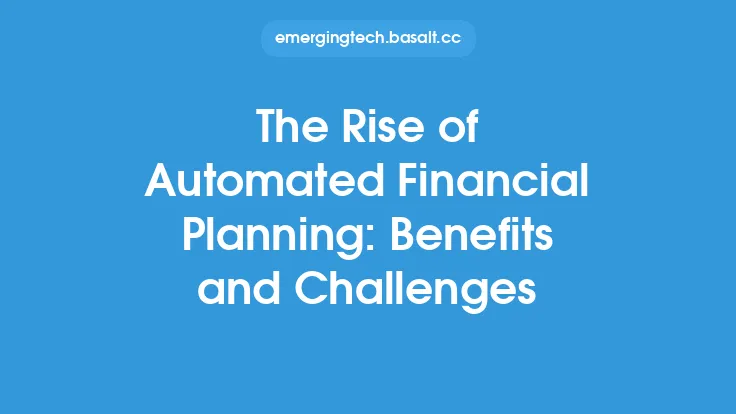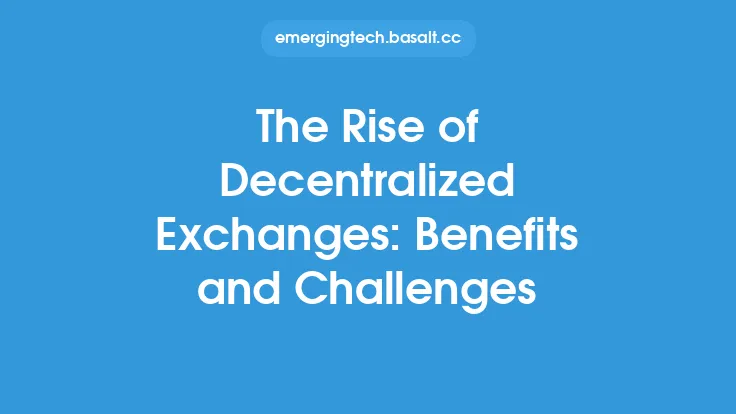Financial exclusion is a pervasive issue that affects millions of people worldwide, denying them access to basic financial services and hindering their ability to participate in the economy. It is a complex problem that arises from a combination of factors, including lack of financial infrastructure, poverty, limited financial literacy, and discriminatory practices. To overcome financial exclusion, it is essential to understand its challenges and develop effective solutions that address the root causes of the problem.
Introduction to Financial Exclusion
Financial exclusion refers to the inability or reluctance of certain individuals or groups to access mainstream financial services, such as banking, credit, and insurance. This can be due to various reasons, including geographical constraints, lack of documentation, limited financial literacy, or discriminatory practices by financial institutions. Financial exclusion can have severe consequences, including limited access to credit, higher transaction costs, and increased vulnerability to financial shocks.
Challenges of Financial Exclusion
The challenges of financial exclusion are multifaceted and can be broadly categorized into supply-side and demand-side factors. Supply-side factors include the lack of financial infrastructure, high operational costs, and limited outreach of financial institutions. Demand-side factors, on the other hand, include limited financial literacy, lack of awareness about financial products, and cultural or social barriers. Additionally, financial exclusion can be perpetuated by discriminatory practices, such as redlining or predatory lending, which can further exacerbate the problem.
Solutions to Financial Exclusion
To overcome financial exclusion, a range of solutions can be implemented, including the use of technology, innovative financial products, and targeted interventions. One of the most effective ways to address financial exclusion is through the use of digital financial services, such as mobile banking, online banking, and digital payments. These services can increase access to financial services, reduce transaction costs, and improve financial inclusion. Additionally, innovative financial products, such as microfinance, peer-to-peer lending, and crowdfunding, can provide alternative sources of credit and financing for excluded individuals and groups.
Role of Fintech in Overcoming Financial Exclusion
Fintech, or financial technology, has the potential to play a significant role in overcoming financial exclusion. Fintech companies can leverage technology to develop innovative financial products and services that are more accessible, affordable, and convenient than traditional financial services. For example, mobile payment systems, such as M-Pesa, have increased access to financial services for millions of people in developing countries. Similarly, digital lending platforms, such as Lending Club and Prosper, have provided alternative sources of credit for individuals and small businesses.
Importance of Financial Literacy
Financial literacy is a critical component of overcoming financial exclusion. Financial literacy refers to the ability of individuals to understand and manage their personal finances effectively. It includes knowledge of financial concepts, such as budgeting, saving, and investing, as well as the ability to make informed decisions about financial products and services. Financial literacy can be improved through targeted interventions, such as financial education programs, counseling, and coaching. Additionally, financial institutions can play a role in promoting financial literacy by providing clear and transparent information about their products and services.
Regulatory Frameworks and Financial Exclusion
Regulatory frameworks can also play a significant role in overcoming financial exclusion. Regulatory frameworks can provide a supportive environment for financial inclusion by promoting competition, innovation, and transparency in the financial sector. For example, regulations that encourage the use of digital financial services, such as mobile banking and online banking, can increase access to financial services and reduce transaction costs. Additionally, regulations that promote financial literacy, such as disclosure requirements and consumer protection laws, can help to protect consumers and promote financial inclusion.
Case Studies of Successful Financial Inclusion Initiatives
There are several case studies of successful financial inclusion initiatives that have been implemented around the world. For example, the M-Pesa mobile payment system in Kenya has increased access to financial services for millions of people, particularly in rural areas. Similarly, the Grameen Bank in Bangladesh has provided microfinance services to millions of low-income individuals, particularly women, and has helped to promote financial inclusion and reduce poverty. These case studies demonstrate the potential of innovative financial products and services to overcome financial exclusion and promote financial inclusion.
Conclusion
Overcoming financial exclusion requires a comprehensive approach that addresses the root causes of the problem. This includes increasing access to financial services, improving financial literacy, and promoting innovative financial products and services. Fintech, regulatory frameworks, and targeted interventions can all play a role in promoting financial inclusion and reducing financial exclusion. By working together, governments, financial institutions, and other stakeholders can help to create a more inclusive financial system that provides opportunities for all individuals and groups to participate in the economy and improve their financial well-being.





